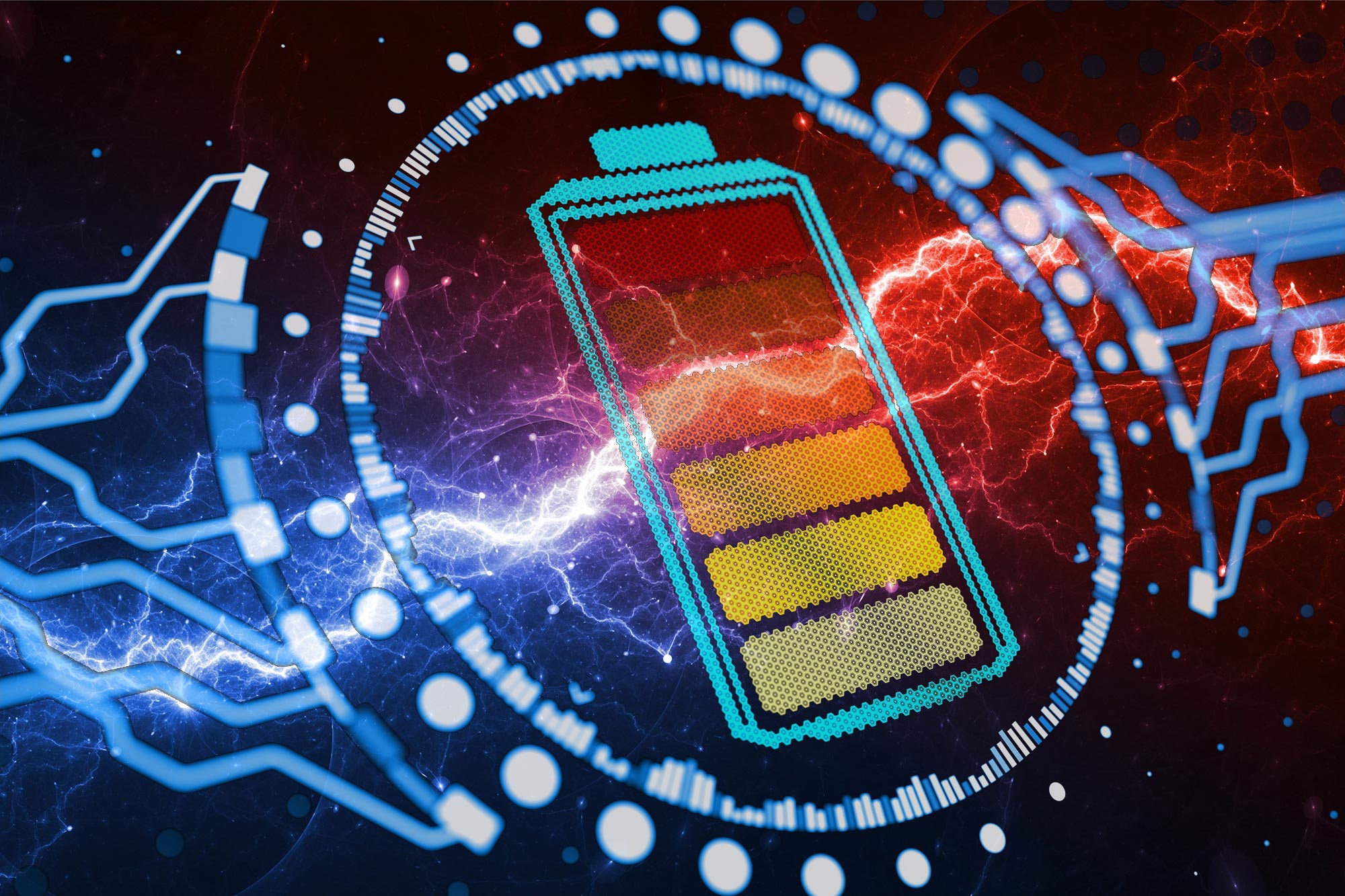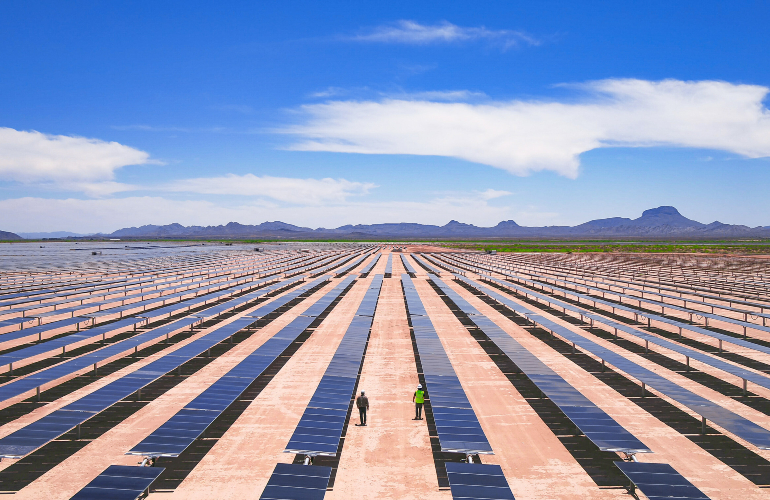#batteries
Tesla starts Powerwall 3 installations: It looks worse but is more useful
https://electrek.co/2023/09/08/tesla-starts-powerwall-3-installations-looks-worse-more-useful/
Researchers uncover an unexpected route to better lithium-sulfur batteries by visualizing reactions at the atomic scale.
Is it bad to leave your laptop always plugged in?
https://www.pcworld.com/article/2038685/laptop-always-plugged-in-is-that-bad.html
La #Voiture #Electrique : #Drame du XXIè siècle - #Voitures & #Ingénierie

" #Argentine, 4 juillet 2023. Plusieurs milliers de personnes se sont rassemblées pour #manifester leur #mécontentement.
Le #sujet : une #réforme de la #Constitution #locale permettant au #gouvernement #argentin de #réquisitionner arbitrairement leurs #terres dans le but d’étendre à loisir les #concessions accordées aux #exploitants #miniers.
L’objet du #conflit : le désormais hautement convoité #lithium.
Car il est peu de dire que ce #métal est aujourd’hui au centre de toutes les attentions.
C’est que les quantités de #minerai utilisé dans les #batteries des voitures #électriques sont phénoménales."
https://www.youtube.com/watch?v=CuljHgRH5zY
#politique #écologie #économie

#Écologies #Lithium #Argentine #Lutte #Repression
Une rébellion des indigènes et de la classe ouvrière dans le triangle du lithium
A #Jujuy (c’est une province au nord de l’argentine), en ce moment, ya énormement de #manifestations et de #contestations violemment réprimées contre la réforme de la constitution de la province, pour la hausse des salaires, contre l’extractivisme (Jujuy se trouve dans le ‘Triangle du Lithium’ qui comprend le nord de l’Argentine, et des parties du Chili et de la Bolivie), etc…
Texte publié sur le site bureburebure.info.
C’est important qu’on soit capables de construire une vraie réflexion et une vraie #solidarité-internationale avec les populations du Sud Globalisé. Energies fossiles ou capitalisme vert, c’est la même exploitation, les mêmes destructions que subissent déjà et vont subir toujours plus les populations précaires, souvent non-blanches, mais aussi les non-humain.es et les terres sur lesquelles iels vivent.
Depuis notre pays qui se gargarise de son programme de relance du nucléaire et du passage au tout #électrique, on ne peut faire l’impasse sur aucune de ces questions. Ou, comment ? Qui seront celleux dans les #mines, qui seront celleux qui n’auront plus d’accès à l’ #eau potable, qui seront celleux qui seront expulsé.es de leurs #terres ? Et qui seront celleux qui repartiront les poches pleines de pognon, et du lithium nécessaires à la fabrication des #batteries de nos vélo, de nos trottinettes, de nos voitures électriques et tout le reste ? Cet article résume et explique pas mal de choses sur le contexte et les mobilisations a Jujuy.
Quelques pistes pour trouver plus d’info (très peu exhaustive) :
sur les réseaux sociaux
→ @soymujercolla (sur instagram, militante qui a crée un canal de diffusion ou elle relaie les auto-média locaux, en espagnol) pour trouver des articles qui parlent des révoltes
→ indymedia argentine
→ https://www.laizquierdadiario.com/
Jujuy : Une rébellion des indigènes et de la classe ouvrière dans le triangle du lithium
Les travailleurs et les populations indigènes de Jujuy, en Argentine, font face aux réformes #antidémocratiques adoptées par le gouvernement provincial et les sociétés internationales d’extraction de lithium qui le soutiennent.
Dans le nord de l’Argentine, riche en lithium, se déroule une bataille rangée qui a des implications mondiales avec l’expansion du « #capitalisme vert ». D’un côté, il y a les #indigènes, les enseignants, les jeunes, les défenseurs de l’ #environnement et les travailleurs précaires. De l’autre, les #multinationales du lithium et leurs représentants argentins au #gouvernement.
Depuis près d’un mois, la province septentrionale de Jujuy retient l’attention du pays, avec des manifestations quotidiennes pour des augmentations de salaire et le rejet d’une « réforme » constitutionnelle #autoritaire imposée par le gouverneur de la province, #Gerardo-Morales. À ce jour, les militants maintiennent plus d’une douzaine de barrages routiers dans toute la région.
La police a sévèrement réprimé les manifestants, faisant au moins 170 blessés, dont un jeune homme de 17 ans qui a perdu son œil après que la police lui a tiré une balle en caoutchouc dans le visage. Les autorités ont également procédé à des arrestations massives, une cinquantaine de manifestants ayant été inculpés. Les journalistes et les organisations de défense des droits de l’homme ont dénoncé la présence de policiers infiltrés dans les manifestations, les descentes illégales dans les maisons, l’utilisation aveugle de gaz lacrymogènes et de balles en caoutchouc, entre autres abus.
Un grand nombre de personnes détenues lors des manifestations sont des indigènes, des femmes et même des enfants. La semaine dernière, des images virales ont montré l’arrestation violente d’une législatrice provinciale, Natalia Morales, que la police avait traînée dans la rue sur plus de 50 mètres. Il est probable que Mme Morales ait été visée en raison de son rôle de dirigeante du Parti des travailleurs socialistes (PTS), un parti trotskiste et une organisation sœur de Left Voice. Le journaliste Lucho Aguilar de La Izquierda Diario, l’organe de presse du PTS, a également été arrêté le même jour alors qu’il couvrait les manifestations. Les Nations Unies et Amnesty International ont dénoncé la violence policière et les arrestations massives à Jujuy, tandis que Greta Thunberg, activiste climatique de renommée internationale, a exprimé sa solidarité avec le mouvement qui se déroule dans les rues.
Au centre de ces affrontements se trouve la lutte contre l’exploitation continue des ressources en lithium par des multinationales étrangères. Alors que les sociétés minières développent leurs activités extractives et génèrent des profits records dans des provinces comme Jujuy, Salta et Catamarca, les habitants du nord de l’Argentine ne bénéficient que très peu des retombées de la production de lithium. Les salaires moyens à Jujuy sont inférieurs d’environ 40 % à ceux de la capitale, Buenos Aires, et le travail informel, qui n’offre pratiquement aucun avantage ni aucune protection de l’emploi, prédomine dans la classe ouvrière. Les perspectives sont particulièrement sombres pour les jeunes : dans la province, neuf jeunes sur dix occupent des emplois précaires. Par ailleurs, les pauvres et les autochtones de la région sont les plus touchés par la contamination et les pénuries d’eau résultant de l’extraction du lithium.
La rébellion remet en question un système dans lequel les multinationales et leurs partenaires locaux pillent les ressources naturelles qui appartiennent légitimement aux populations du Sud Globalisé, en ne laissant derrière eux que pauvreté et dégradation écologique. De plus en plus, les travailleurs et les membres des communautés marginalisées estiment que ce sont eux qui devraient contrôler les ressources minérales de leur région, que ce sont eux qui devraient déterminer où et comment l’extraction devrait avoir lieu, et que ce sont eux qui devraient bénéficier des recettes.
Convergence des luttes des enseignants et des autochtones
Les manifestations en cours ont débuté le mois dernier par des grèves d’enseignants réclamant des augmentations de salaire. Les salaires des enseignants de Jujuy sont parmi les plus bas du pays ; ici, le salaire de départ d’un enseignant peut n’être que de 35 000 pesos (environ 140 USD) par mois, alors que le coût de la vie s’élève à plus de 200 000 pesos par mois (près de 800 USD). Avec l’inflation galopante dans le pays – l’Argentine a connu une inflation de plus de 100 % au cours de
l’année écoulée – les enseignants sont de plus en plus poussés vers la pauvreté.
Les grèves des enseignants ont coïncidé avec une tentative du gouvernement de Gerardo Morales de réformer la constitution de la province. Rapidement, les enseignants ont été rejoints dans les rues par des membres des communautés indigènes, des jeunes, des travailleurs et des membres des partis de gauche. Parmi les changements qui ont suscité le plus d’indignation populaire figurent de nouvelles interdictions de manifester dans les rues et des mesures visant à déposséder les
populations indigènes et à faciliter l’expansion des activités minières sur les terres indigènes. L’objectif des soi-disant réformes de Morales est clair pour tou.tes les habitant.es de Jujuy : permettre aux entreprises multinationales d’accéder à de nouvelles ressources en lithium et réduire les protestations contre les opérations minières ou les politiques favorables à l’exploitation minière.
Conscient de l’impopularité de ces réformes parmi les habitant.es de Jujuy, Morales les a fait passer à toute vitesse au sein de l’assemblée législative provinciale, sans prévoir de véritable temps de débat et sans consulter les communautés indigènes qui seraient les plus touchées. En fait, le texte final de la réforme n’a été rendu public que le jour du vote.
Alors que le président Alberto Fernandez et la vice-présidente Cristina Fernandez de Kirchner ont dénoncé la brutalité des forces de police de Morales à Jujuy, des membres de leur parti ont approuvé la réforme du gouverneur et ont joué un rôle crucial dans son adoption par le corps législatif. Pendant ce temps, les dirigeants péronistes d’autres provinces, comme Gustavo Saenz, gouverneur de la province de Salta et proche allié du président, ont tenté de restreindre de la même manière le droit de manifester et ont apporté des réponses tout aussi répressives aux manifestations.
La seule force au sein du corps législatif à dénoncer systématiquement la réforme constitutionnelle autoritaire a été le Front de gauche des travailleurs (FIT-U, selon ses initiales en espagnol), une coalition de quatre partis trotskystes, dont le PTS. Plutôt que de légitimer le processus, les quatre membres du FIT-U élus à l’assemblée constituante ont annoncé un boycott du processus de réforme depuis la salle et ont quitté les débats. Les membres du PTS et de la FIT-U ne limitent pas leur combat à l’arène électorale ; depuis le début des grèves et des manifestations, ils sont aux côtés des indigènes, des enseignants et d’autres personnes dans les rues pour exiger des augmentations de salaire et l’abrogation des réformes. En outre, le PTS/FIT-U appelle les syndicats à organiser une grève générale jusqu’à ce que les revendications du mouvement soient satisfaites.
Avec l’éclatement des manifestations, le gouvernement de Morales a été contraint de reculer et a retiré plusieurs des réformes qu’il avait prévues, telles que la suppression des élections à mi-parcours. Il a cependant maintenu la mesure la plus détestée : de lourdes sanctions pour les militant.es qui organisent des cortes de ruta (ou barrages routiers) lors des manifestations politiques. Ces barrages routiers constituent la méthode de lutte historique de la classe ouvrière argentine et des communautés opprimées, en particulier dans les régions les plus pauvres du pays, comme Jujuy. En effet, c’est pratiquement la seule méthode dont ils disposent pour se défendre contre le vol de leurs terres, la pollution de leurs ressources en eau et la pauvreté écrasante qui leur est imposée. Et dans un pays où la violence contre les femmes est très répandue – une femme est assassinée toutes les 36 heures en Argentine – les barrages routiers sont également devenus une méthode nécessaire de lutte pour la justice au sein du mouvement féministe.
La ruée vers l’or blanc
Le nord de l’Argentine fait partie de ce que l’on appelle le « triangle du lithium » de l’Amérique du Sud, une région de 7 000 pieds carrés qui comprend également des parties du Chili et de la Bolivie et qui renferme, selon les estimations, les trois quarts de toutes les ressources mondiales en lithium. L’Argentine est aujourd’hui le quatrième exportateur mondial de lithium, derrière l’Australie, le Chili et la Chine. Deux des trois mines de lithium en activité en Argentine sont situées à Jujuy. Parmi les multinationales qui profitent aujourd’hui des réserves de la région, citons la société américaine Livent Corp, la société australienne Allkem, la société canadienne Lithium Americas Corp et la société chinoise Ganfeng Lithium.
L’industrie du lithium connaît l’une des croissances les plus rapides au monde, en grande partie à cause des besoins en lithium des batteries rechargeables, telles que celles utilisées par les véhicules électriques (VE). La production de VE atteignant chaque année de nouveaux records, la demande mondiale de lithium monte en flèche. C’est pourquoi il a souvent été surnommé « l’or blanc ». En 2022, l’Argentine a exporté pour près de 700 millions de dollars de lithium, ce qui représente une augmentation de plus de 200 % par rapport à l’année précédente. Les principales destinations étaient la Chine, le Japon, la Corée du Sud, les États-Unis et l’Union européenne. Six autres sites d’extraction de lithium dans le nord de l’Argentine devraient ouvrir dans les années à venir.
Les États-Unis, qui ne veulent pas être en reste dans la course au lithium argentin, tentent également d’accroître leur influence dans la région et se montrent même prêts à utiliser leurs ressources militaires pour garantir leurs intérêts. Le général américain Laura Richardson, chef du commandement sud de l’armée américaine, a rencontré la vice-présidente argentine Cristina Kirchner et le ministre de la défense Jorge Taiana en 2022 pour discuter d’une formation militaire conjointe dans le pays. Elle a récemment souligné la nécessité de lutter contre « l’agressivité, l’influence et la coercition » de la Chine dans le Triangle du lithium et l’importance d’ »exclure » les concurrents américains de la région.
Les habitants pauvres et indigènes de Jujuy comprennent bien que si les sociétés de lithium ont réalisé d’énormes profits ces dernières années, ce sont les capitaux étrangers et une petite élite argentine qui ont bénéficié de l’extraction du lithium. Pendant ce temps, la majorité des habitants de la province souffre de pauvreté chronique, de précarité et d’un accès à l’eau douce qui ne cesse de diminuer. Les industries telles que les véhicules électriques, qui utilisent des batteries lithium-ion,
sont souvent présentées comme une alternative écologiquement responsable. Pourtant, le bilan des sociétés d’extraction de lithium dans des régions comme Jujuy montre clairement l’impact écologique dévastateur de cette industrie.
Tout d’abord, l’extraction du lithium du sol nécessite d’énormes quantités d’eau. Selon une étude, la production d’une tonne de lithium (d’une valeur d’environ 19 000 dollars) nécessite l’utilisation d’un million de litres d’eau. Dans les régions arides comme Jujuy – certaines parties de la province ne reçoivent que 100 millimètres de précipitations par an – cette utilisation intensive d’eau douce est durement ressentie par les communautés locales et les petit.es exploitant.es agricoles.
Une conscience de classe grandissante
Les profits faramineux d’industries telles que l’exploitation du lithium et l’agro-industrie, ainsi que la dégradation de l’environnement et le fossé toujours plus grand entre riches et pauvres, ont profondément façonné la conscience de classe de la classe ouvrière et des communautés opprimées de Jujuy. Le soutien massif obtenu par le FIT-U lors des dernières élections en est la preuve. Le FIT-U a obtenu 25 % des voix à Jujuy lors des élections nationales de mi-mandat l’année dernière, ce qui lui a permis d’élire son tout premier député de gauche au Congrès, Alejandro Vilca. Vilca est lui-même d’origine indigène, travaille depuis longtemps dans le secteur de l’assainissement et milite au sein du PTS. Cette année, M. Vilca s’est présenté aux élections provinciales et a obtenu le meilleur résultat pour un candidat de gauche au poste de
gouverneur dans tout le pays depuis trente ans. L’avancée de la gauche est due en grande partie au programme anticapitaliste qu’elle a mis en avant pour contester les intérêts des grandes entreprises minières et agricoles et rendre les richesses de la province à sa population. Ce programme comprenait, avant tout, l’étatisation – ou la prise de contrôle par l’État – des ressources en lithium de la province par les travailleurs et les consommateurs.
La lutte des indigènes, des enseignants et des pauvres de Jujuy requiert la solidarité internationale la plus large, d’autant plus que le lithium extrait de leurs terres est en grande partie destiné aux pays du Nord et que les bénéfices de sa vente vont aux multinationales étrangères. Cette solidarité doit inclure le rejet de la réforme constitutionnelle et du pillage impérialiste des ressources locales, ainsi que le soutien à l’abandon des poursuites contre les manifestants, à des salaires égaux au coût de la vie et à l’étatisation des ressources en lithium sous le contrôle des travailleurs et des consommateurs. Enfin, les militants et les travailleurs des États-Unis et du Nord doivent exiger l’annulation de toute la dette extérieure des pays du Sud, y compris de l’Argentine, puisque cette dette est en fin de compte payée par des projets extractivistes contaminants comme l’exploitation du lithium.
Nous devons lutter pour une transition mondiale immédiate vers les énergies renouvelables, mais le développement d’infrastructures renouvelables ne doit pas se faire au prix de la dépossession des peuples indigènes et de la contamination de leurs terres et de leurs eaux. L’expérience de Jujuy montre que la promesse du « capitalisme vert » est une farce cruelle. En effet, pour surmonter les crises climatiques et écologiques, il faut remettre directement en question le système capitaliste qui en est responsable.
https://www.leftvoice.org/jujuy-an-indigenous-and-working-class-rebellion-in-the-lithium
-triangle/
Toyota claims breakthrough with their solid state battery — full charge in 10 minutes with over 1,000 km of range by 2028
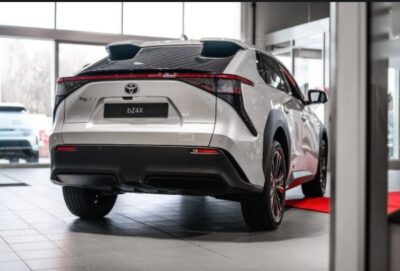
Well, if this is really true (Toyota is no new or small start-up) it is certainly going to tick all the major boxes remaining for EV batteries as far as economic requirements go.
Ease of manufacture, range, charge time, and safety were some of the biggest factors holding many back from adopting EVs.
Yes, price is also quite a big factor, but if this is produced at scale, or even is slightly smaller sizes, the price factor can be overcome. I’d be quite OK with having a 500 km range battery that could charge in 5 or 6 minutes.
One issue not mentioned, though, is whether there is any improvement in the rare metals environmental impact. That will probably still factor lower than the other considerations, though, mainly because EVs already have an overall lower impact than ICE vehicles.
See https://mybroadband.co.za/news/motoring/502700-toyota-battery-breakthrough-full-charge-in-10-minutes-with-over-1000km-of-range.html
#Blog, #batteries, #environment, #EV, #technology
futura sciences
Peut-on remplacer les métaux rares utilisés pour la production d’énergies renouvelables ?
https://mcinformactions.net/Peut-on-remplacer-les-metaux-rares-utilises-pour-la-production-d-energies
#metauxrares #urgenceclimatique #batteries #energie
New Flow Battery Using Simple Sugar Has Year Long Charge Duration For Grid Storage: A Healthier Use For Sugar
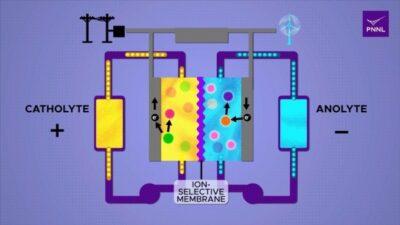
The discovery could lead to new low-cost, long duration energy storage systems that can write fossil energy out of the picture by capturing wind and solar power for weeks, months, or even whole seasons.
To provide full day, utility scale energy storage as more wind and solar power enter the grid, a flow battery fits the bill.
I really love that there is so much research, and the associated results flowing back, around all sorts of different approaches to batteries. Without a doubt, grid storage is now the big thing needed for variable power generation technology. Being storage, it can also be located where it is required for use.
See https://cleantechnica.com/2023/07/12/new-flow-battery-lasts-all-year-on-simple-sugar/
#Blog, #batteries, #environment, #gridstorage, #technology
EU: Samsung and other brands may be forced to bring back phones with removable backs so that we can easily replace batteries
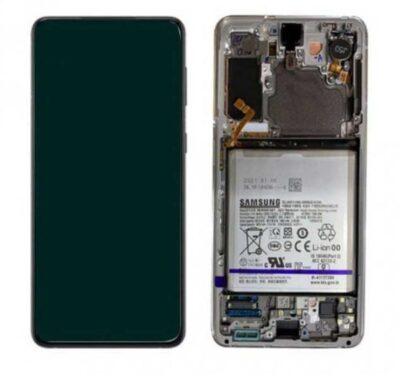
Gone are the days when we could easily take off the smartphone’s battery and replace it with a new one. You didn’t need a heat gun or a specialised tool to pop open the back of your phone, and you could easily do that with your fingernails. It seems like we could get the good old days back, thanks to a law passed by the European Union.
According to a new report, the European Parliament has changed a previous law that will force all gadgets, including smartphones, to have easily replaceable batteries. The MEP’s vote count ratio for this change stood at 587 to 9. The term ‘easily’ means that users should be able to replace the batteries without requiring special tools.
This means OEMs, from Apple to Google to Samsung, all have to make drastic changes to their smartphone designs (by 2027) to adhere to the new change that asks them to mount easily replaceable batteries on their devices.
Yes, my experience (a Nexus 6P) has been that it is usually the battery that wears out first, causing a perfectly good phone to become largely useless unless you want to risk the almighty pain of heat guns and levers to pry the phone apart. I did a battery change once, and it is just not something I really want to do again.
I know manufacturers are going to say it is about size (well I’ll gladly have a slightly thicker phone) or water resistance (I’m sure designers can come up with something again that includes rubber rings etc). I do get the feeling that manufacturers deliberately went the route of sealed phones so that we get pressed into buying new phones every two or three years. Now we have longer software updates, but batteries die after three years or so.
It is not just about the environment, but I’ve also seen that so many disposable products actually become far more expensive for users (for example cartridge razor blades).
See https://www.sammobile.com/news/samsung-needs-to-revamp-its-phone-design-to-implement-easily-replaceable-batteries/
#Blog, #batteries, #EU, #ewaste, #smartphones, #technology
How to charge body batteries
https://www.youtube.com/watch?v=YWpBQ9gkV3c
#Charge #Body #Batteries #Energy
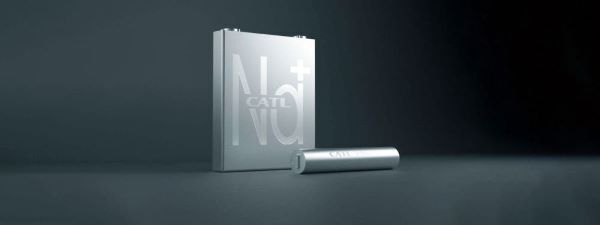
Sodium-Ion Cars Ready for Sale
https://invidious.lunar.icu/watch?v=nl_kIaN29SU
Chinese scientists are about to launch three different lines of #sodium-powered cars. They will be cheaper than regular cars or electric vehicles—which is why environmentalists hope they’ll kickstart mass market adoption of #clean-energy travel.
#future #cars #sodium-ion #batteries #environment #low-price
The Sodium-Ion Battery Is Coming To Production EV Cars This Year, Such As The Chery iCAR

Sodium is also abundant, but unlike lithium, is readily available. Sodium — one of the primary components of table salt — is chemically similar to lithium, and thanks to the explosion in lithium carbonate prices, many companies are researching ways to use it to replace lithium in the batteries for electric vehicles. Sodium is an attractive alternative to lithium because it costs only 2 to 3% as much as lithium. Imagine what that price difference could mean to the price of new electric vehicles!
Despite being chemically similar, sodium-ion batteries today have considerably lower energy density than lithium batteries. Things are moving quickly in battery development. The sodium-ion batteries available today will likely improve just as quickly.
On the other hand, sodium batteries are much less affected by low temperatures and appear to be able to handle more charge/discharge cycles than lithium-ion batteries. The latest sodium batteries do not require scarce materials like cobalt and nickel. Both CATL and BYD say they are about to introduce EV battery packs that have a mix of lithium-ion and sodium-ion cells.
So as is usual with battery technology, there is not yet any read drop-in better replacement for Lithium batteries, especially for EVs. But what is also quite usual, is that money is being pumped into research to radically improve these various alternative chemistries. And what is also certain is, that even if these batteries are still not compact enough for EVs, they will have a place so long with grid storage and similar use cases.
See https://cleantechnica.com/2023/04/22/the-sodium-ion-battery-is-coming-to-production-cars-this-year/
#Blog, #batteries, #environment, #EV, #technology
#extermination #agenda21 in full swing
https://www.bitchute.com/video/yXYbwSBg81mC/
people are so silly believing the lairs
and hiding from the truth
saying no is the soulution
#EV IN FLAMES again and again, this is clean ???
THE #NET_ZERO #FAIRY #TALE WE ARE TOLD AS THE #LITHIUM #BATTERIES #BURN 💥🔥
Canadian team discovers power-draining flaw in most laptop and phone batteries
Longroad Energy developing 285-MW solar + storage project in Arizona
Longroad Energy, a U.S.-based renewable energy developer, owner and operator, commenced construction of Sun Streams 3, its 285-MWDC solar and 215 MWAC/860 MWh storage project located in Maricopa County, Arizona. Sun Streams 3 is expected to begin commercial operations in 2024 and will be the largest solar + storage project in Longroad’s operational portfolio. “We…
https://www.solarpowerworldonline.com/2023/01/longroad-energy-building-solar-storage-project-in-arizona/
#central, #markets, #storage, #batteries, #inverters, #components, #news

